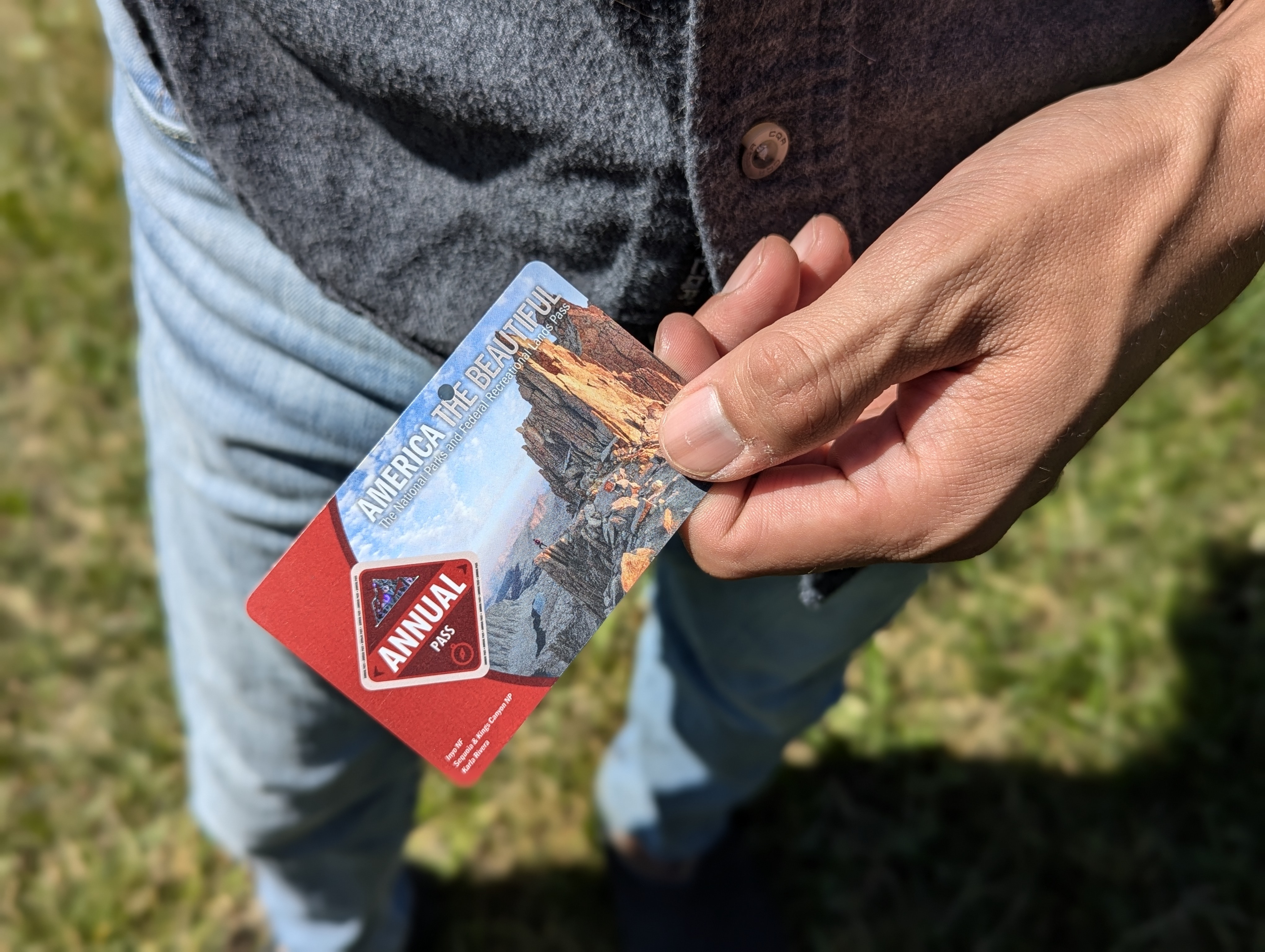If you’re anything like me, it feels like Christmas morning driving up to a national park with your America the Beautiful pass in hand. I proudly hand over my annual pass alongside my photo ID to the ranger, grab a park map, and head towards the attractions, contented that no money has exchanged hands. It’s one of the best travel subscription memberships for outdoor enthusiasts, but is the pass worth it for you?
The good news is that it’s never going to be a complete waste of money because 100% of the pass fees are invested back into the beautiful parks that we love. However, if you only enjoy national parks once in a while or favor the free options, it may not be the best bet.
Here’s a quick breakdown of the costs and benefits to help you decide if an America the Beautiful pass is worth it for you and how to make the most of it if you pick one up.
Everything you need to know about the America the Beautiful pass

What exactly is the America the Beautiful pass? This handy membership allows cardholders to enter any national park or federal recreation area an unlimited number of times within a 1-year timeframe.
The pass currently costs $80 and is good for at least 365 days after it is purchased. So, if you buy it on April 15th, 2024, you can use it until April 30th, 2025. It’s really easy to buy a pass. Simply ask to purchase one at the entrance gate when you next visit a national park.
You’ll be free to access any areas managed by:
- National Park Service
- US Forest Service
- Bureau of Land Management
- US Fish & Wildlife Service
- US Army of Corps of Engineers
- Bureau of Reclamation
But if you like to buy in advance, you can buy one online or find an in-person location for purchase, including popular retailers like REI. It’s important to note that if your pass doesn’t ship in time for your trip into the park, you can’t use a receipt or purchase confirmation to get in – you need your card in hand.
Unfortunately, the standard America the Beautiful card doesn’t cover additional amenities like lodging, camping, or tour discounts. However, with parks costing as much as $35 dollars for entrance, it can still lead to considerable savings.
Is the America the Beautiful pass worth it?

Now, the million-dollar (or, less dramatically put, the 80-dollar) question: is the America the Beautiful pass worth the cost? Well, there are a few ways to determine this.
In general, if you plan to visit four or more national parks over the next year, it’s probably worth it.
Let’s say three of those parks cost $35, and one costs $15. This would total $120, meaning that you’d save $40 with the pass.
The savings get even better if you enter locations with per-person fees, such as the Carlsbad Caverns National Park, which charges $15 per visitor. The pass admits up to 3 adults, which is a savings of $45 per visit.
As you can see, the more costly parks offer the biggest savings with a pass in hand. Here are the parks with the heftiest entrance fees:
- Yellowstone National Park
- Glacier National Park
- Grand Canyon National Park
- Kings Canyon National Park
- Yosemite National Park
- Bryce Canyon National Park
- Grand Teton National Park
If you plan on visiting some of these more popular parks, you’ll likely save money. However, there are plenty of free options as well, such as:
- Great Smoky Mountains National Park
- Hot Springs National Park
- Mammoth Cave National Park
- North Cascades National Park
- Wind Cave National Park
Do you anticipate going to more of these free options? Then the America the Beautiful pass won’t be very helpful. But visiting a variety of free and paid parks with your pass can at least allow you to break even.
How to make the most of your annual national parks pass

To make sure you get the most value from your pass, purchase it the moment you arrive at a national park that charges a fee so your pass has the furthest possible expiration date. If you buy your pass a month or two before you actually head out to a park, you’re losing precious time and will have to renew the card sooner.
Keep in mind that annual passes are not a replacement for reservations in parks requiring them. Even if you have a pass, you still need to make reservations for popular parks beforehand, usually 90 days in advance. The best time to visit parks that require reservations is during shoulder and low season when crowds have thinned.
Did you know that certain outdoor enthusiasts receive free or discounted America the Beautiful memberships? See if you qualify under one of the following categories:
- Seniors age 62 and older: $20 annual pass or $80 Lifetime Senior pass
- Military and their dependents: Free annual pass available at federal recreation sites
- Gold star veterans: Free lifetime pass
- 4th graders: free annual pass
- Volunteers with 250 service hours: free volunteer pass
If you don’t think the annual pass is worth it, there are other options. If you’re just visiting parks in a specific region, there are often passes for that. For example, the Southeast Utah Parks Annual Pass is valid at a handful of popular locations, including Arches National Park, Natural Bridges National Monument, and Canyonlands National Park.
You can also take advantage of the 6 days each year that the NPS offers free entry to every national park. These free days range from January to November, giving ample opportunity to plan a visit. And, of course, sticking to complimentary locations year-round is the most budget-friendly option.




